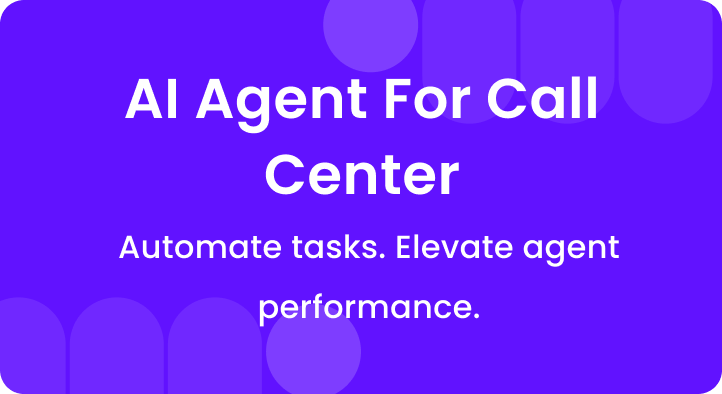Did you know labor can eat up to 70% of a call center’s budget?
Wages, licenses, and compliance fees also rise each year.
Meanwhile, callers expect instant, friendly help around the clock.
It’s a recipe for stress. Isn’t it?
The good news?
You can lower expenses, boost efficiency, and keep your customers smiling.
All it takes is a smart, practical approach.
Let’s explore 13 real-world call center cost reduction strategies for 2025.
These proven tips will help you save big, work smarter, and keep your team and customers happy.
So, let’s get started!
A. Why does cost optimization matter in call centers?
Costs keep climbing, especially for high-volume contact centers.
Labor, tech, compliance, and training add up fast.
If you don’t plan ahead, you end up making knee-jerk cuts that hurt service and drive good agents away.
Cutting expenses without hurting CX or agent morale is a delicate balance.
A little tweak like dropping handle time by 5%, can save tens of thousands yearly.
When you optimize costs the right way, you:
- Free up cash for new tech and better perks
- Improve agent retention (less hiring and training headaches)
- Deliver a smoother customer experience
B. 13 proven strategies to cut call center costs in 2025
| Move | Why it works | How to do it |
| AI quality monitoring | Fewer QA hours, fewer fines | Pick an AI-powered QA tool like Enthu.AI, set it to flag key issues like compliance or tone, use insights for targeted coaching. |
| WFM forecasting | Less idle time, less overtime | Use workforce management (WFM) software, analyze historical call data, adjust schedules weekly or daily. |
| Self-service | Deflect low-value calls | Build a chatbot for common queries, set up IVRs for tasks like order status, keep self-service options updated. |
| Root-cause fixes | Fewer callbacks | Track repeat calls, analyze patterns (e.g., same issue keeps popping up), fix processes or train agents on weak spots. |
| Real-call training | Faster ramp-up, fewer errors | Use call transcripts for coaching, focus on top pain points. offer ongoing, targeted training. |
| Trim dead air | Shorter handle time | Improve scripts, use screen popups for quick info, train on first-call resolution. |
| Smart outsourcing | Lower hourly rate | Identify low-value tasks, pick a reliable BPO, set clear SLAs. |
| Engagement drives retention | Avoid rehiring spend | Recognize effort, coach with empathy, offer growth paths. |
| Cloud platforms | No hardware refresh | Pick a cloud CCaaS provider, migrate data smoothly, train agents on new tools. |
| Transcripts & analytics | Rapid coaching & compliance | Use speech analytics tools, review transcripts weekly, spot trends for coaching. |
| Tool consolidation | Fewer licences | Audit current tools, pick an all-in-one solution, train agents on it. |
| Balanced metrics | Stops hidden waste | Use dashboards for real-time tracking, set targets for each metric, review weekly. |
| Automate post-call work | Less wrap time | Use RPA for post-call tasks, integrate with CRM, test and tweak. |
1. Automate quality monitoring
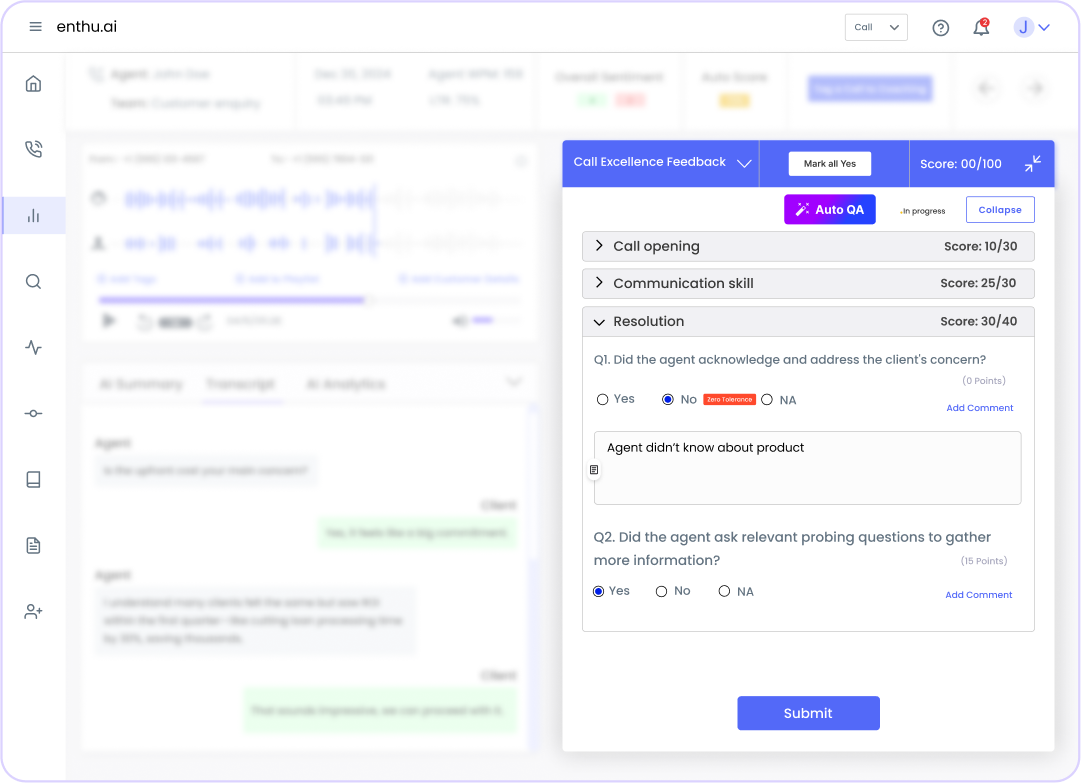
Still reviewing just 2–5% of calls manually?
That’s an old-school method.
Automated QA tools now instantly review 100% of calls, flagging issues and compliance risks.
This means:
- Less time spent on manual reviews
- More accurate feedback for agents
- Easier tracking of call center quality assurance compliance, PCI DSS call center compliance, and other standards
With automated QA, you spot trends early and coach your team on real calls, not just random samples.
Plus, it’s a lifesaver for TCPA compliance for call centers and HIPAA compliance call center requirements.
Best part? Enthu.AI offers five free evaluations – a no-risk way to see savings unfold.
2. Improve agent scheduling with forecasting tools
Ever feel like you have too many agents sitting idle or not enough during peak times?
Modern workforce-management (WFM) software crunches historical volume, marketing calendars, and even weather data to forecast demand.
The tool then automatically creates shifts that match peaks, lets agents swap schedules in an app, and alerts supervisors to real-time shrinkage.
This means:
- Less overtime pay
- Fewer idle agents
- Happier customers (shorter wait times)
3. Use self-service options (IVRs, chatbots, help centers)
Every call deflected to self-service saves several dollars.
Customers like it too: 61% prefer fixing simple issues on their own.
Build an IVR that handles balance checks, shipment status, or PIN resets without an agent.
Layer in a chatbot that walks users through FAQ content drawn from your knowledge base.
Pro tip: Start with your top five call drivers. Pull last month’s volume data and see which questions repeat. If “Where’s my refund?” leads the list, script that first.
4. Fix repeat call drivers with root cause analysis
Callbacks double work and annoy customers. You need detective work.
Export transcripts for calls tagged as “second contact within 72 hours.”
Look for patterns:
- Unclear policy wording,
- Approval bottlenecks,
- Or buggy apps.
Bring product, billing, and IT teams into a weekly “defect huddle.”
Fix one root cause at a time.
- Fewer callbacks = lower call volume
- Happier customers who get their problem solved the first time
Grant agents the authority to waive minor fees or ship replacements on the first call.
That one change alone can bump FCR by several points.
Remember the math: each one-percent rise in FCR often cuts total operating costs by the same amount.
5. Train smarter, not harder
Generic training is a waste of time and money.
Instead, coach agents using real call examples and focus on high-impact feedback.
Automated QA for call center compliance makes it easy to spot coaching moments.
- Prioritize skills that drive results (like empathy or product knowledge)
- Use call transcripts and recordings to show what works (and what doesn’t)
- Offer feedback right after the call, when it matters most
Investing in targeted training boosts performance and cuts handle time.
6. Cut the handle time the right way
Don’t rush agents – just help them work smarter.
Focus on removing dead air, improving scripts, and using screen popups or call summaries to speed things up.

- Better scripts = less time searching for answers
- Smart popups show relevant info instantly
- Call summaries help agents wrap up faster
Remember: it’s about quality, not just speed.
7. Outsource non-critical tasks
Not every interaction needs an in-house expert.
Outsource simple password resets, after-hours voicemail callbacks, or seasonal order status queries to a vetted BPO.
Offshore locations often run $10 per productive hour, less than half domestic fully loaded rates.
Quality still matters. Include your contact center compliance checklist in the statement of work.
Require call-recording access so your in-house QA team or your automated QA software can spot-check for TCPA or HIPAA compliance.
Start small, measure, then scale.
8. Reduce attrition with better engagement
Losing seasoned reps is like deleting tribal knowledge. Prevent exits by making work human.
Keep your agents engaged by:
- Recognizing effort and celebrating wins
- Offering micro promotions
- Coaching with empathy and real feedback
- Offering clear growth opportunities
- Provide tools that cut drudge tasks
- Survey agents quarterly. Ask, “What slows you down?”
Remove one pain point each sprint.
Engagement climbs, attrition drops, and you pocket the $30k you would have spent replacing talent.
9. Switch to cloud-based contact center platforms
Still running servers in your office? That’s expensive and hard to scale.
Cloud contact-center platforms (CCaaS) roll voice, chat, email, routing, and analytics into one browser tab.
You pay per seat per month – no huge capital outlay.
- No more hardware headaches
- Scale up or down in minutes
- Built-in features like auto-attendant, call routing, and analytics
Cloud also unlocks remote hiring pools and elastic licenses, so you pay only for seats used.
Total tech savings often land in the 20–30% range within the first year.
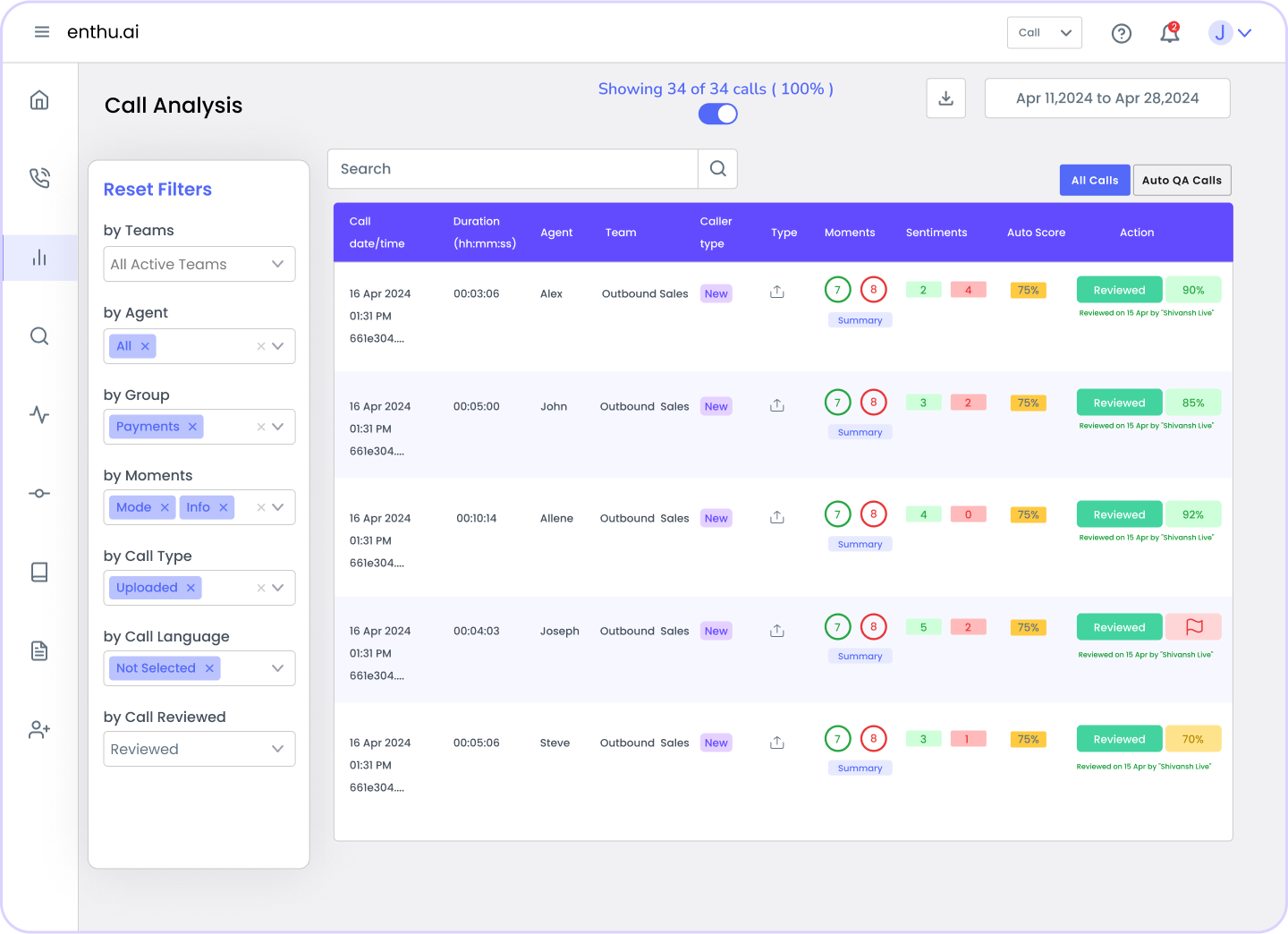
10. Use call transcripts for coaching & process fixes
Call transcription software saves time and makes feedback more actionable.
Instead of listening to hours of calls, you can scan transcripts for key moments.
- Spot compliance issues early (like PCI DSS or HIPAA compliance)
- Use transcripts for targeted coaching and process improvements
- Share best practices easily across the team
Transcripts also speed root-cause analysis.
Cluster text with natural-language tools to see which phrases link to low CSAT.
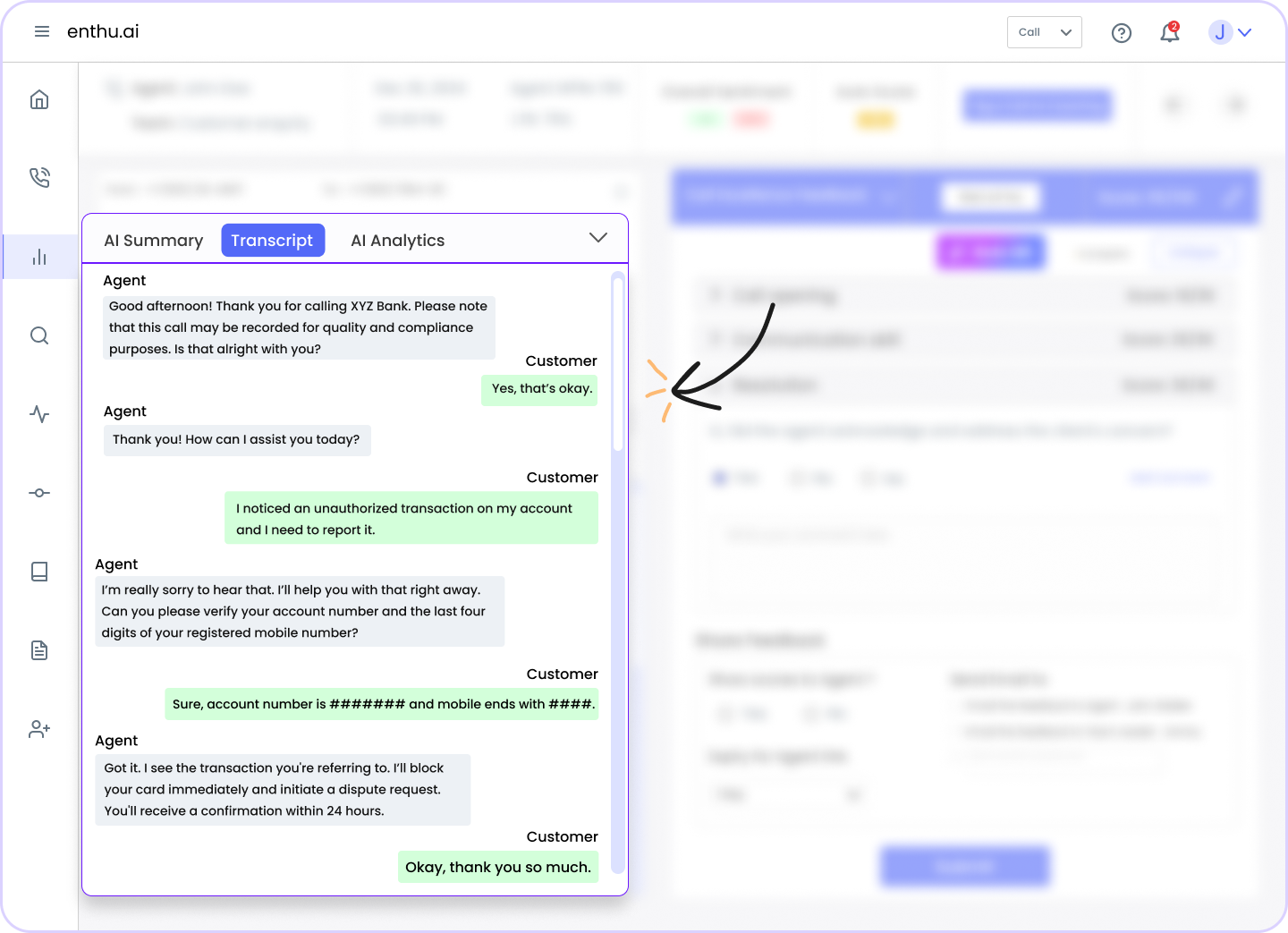
11. Limit tool overload
Too many tools slow your team down and drive up costs.
Use platforms that centralize coaching, QA, call records, and feedback.
This makes life easier for agents and managers.
- Fewer logins and less confusion
- Lower software costs
- Better call center data security and compliance
Look for all-in-one solutions that cover your must-haves.
12. Track metrics that actually affect cost
Don’t just watch the handle time. Track call center metrics that link to cost and quality, like:
- Repeat calls
- Silence on calls
- Coaching impact
Besides, build a simple scorecard:
- Speed = AHT vs target
- Quality = QA score + compliance hits
- Outcome = FCR trending
- Voice of Customer = post-call CSAT
Weight each pillar evenly. Reps now aim to solve problems fully, not just fast.
Managers spot hidden waste early, like a rising repeat-call trend despite falling handle time, and fix it before costs spiral.
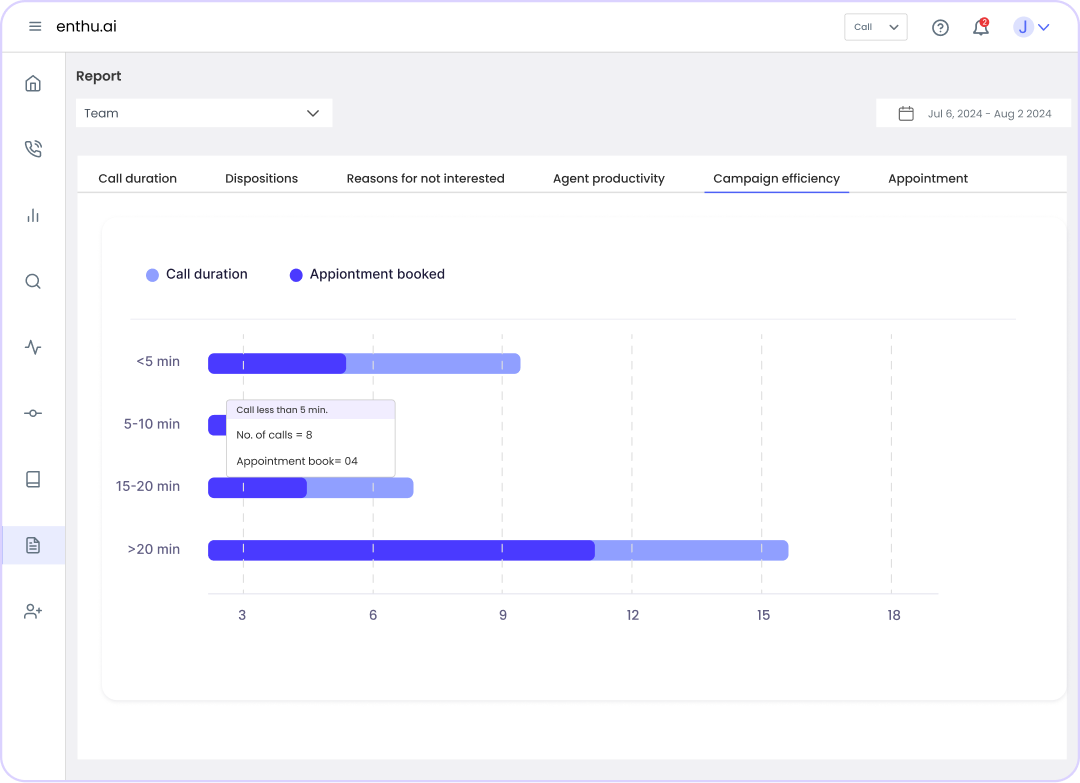
13. Automate low-value post-call tasks
Agents shouldn’t waste time tagging calls, updating CRM, or sending survey follow-ups.
Automate these tasks so your team can focus on what matters – helping customers.
- Faster wrap-up times
- More time for high-value calls
- Fewer errors in records
AI and workflow automation tools make this easy to set up.
C. Red flags that you’re overspending
Watch out for these warning signs:
- Too many tools doing the same job: Leads to confusion and extra costs.
- QA team still reviewing <5% of calls: Manual QA misses most issues.
- High repeat calls and escalations: Signal unresolved problems.
- Generic training: Agents need targeted coaching.
- No performance trend tracking: Can’t spot issues without data.
| Red Flag | Impact | Solution |
| Too Many Tools | Increased costs, confusion | Consolidate to one platform |
| Low QA Coverage (<5%) | Missed compliance issues | Automate QA with AI tools |
| High Repeat Calls | Higher call volume, costs | Root cause analysis |
| Generic Training | Lower productivity | Targeted coaching with transcripts |
| No Trend Tracking | Missed optimization opportunities | Use dashboards for metrics |
See your center in any row?
Tackle the matching strategy first. Quick pilots build trust and free budget for bigger moves.
Conclusion
Saving money in a contact center is less about slashing headcount and more about killing waste.
Automate what machines do best – scoring calls, writing notes, and predicting volume.
Let humans shine at empathy and creative problem-solving.
Start with two moves this month: maybe Enthu’s free AI evaluations to prove automated QA, plus a WFM forecast refresh.
Track the impact on handle time, FCR, and agent smiles. Feed wins back into the cycle.
Soon you’ll see a leaner budget, happier staff, and faster resolutions.
And because every dollar saved can fund further improvements like upgraded call center compliance training or a richer knowledge base, you build resilience for whatever 2026 brings.
FAQs
1. What are the top techniques for cost reduction?
Cost reduction in call centers involves practical strategies that lower expenses without sacrificing quality. Key techniques include:
- Optimize workforce management:
- Implement self-service options
- Invest in targeted training
- Leverage cloud-based technology
- Outsource non-core tasks
- Use automation
- Limit tool overload
- Track meaningful metrics
These techniques combine technology, process improvements, and smart staffing to cut costs while maintaining or improving customer experience.
Q 2. How do I optimize call center outsourcing cost?
Optimizing outsourcing costs requires strategic choices and ongoing management:
- Choose the right location
- Match service complexity to provider expertise
- Negotiate flexible pricing models
- Outsource non-core activities
- Leverage vendor technology and skills
- Monitor service levels
- Focus on core business activities
- Mitigate risks
Regularly review contracts, measure performance, and keep communication open to maximize outsourcing ROI.
Q. What is cost per call in a call center?
Cost per call is your total operating expense divided by the number of calls handled in the same period.
Include: wages, benefits, telecom, software, facilities, and training.
Exclude: marketing or R&D spend unrelated to service.
Formula: Cost Per Call = (Total Monthly Contact-Center Costs) ÷ (Total Calls Answered)




 On this page
On this page